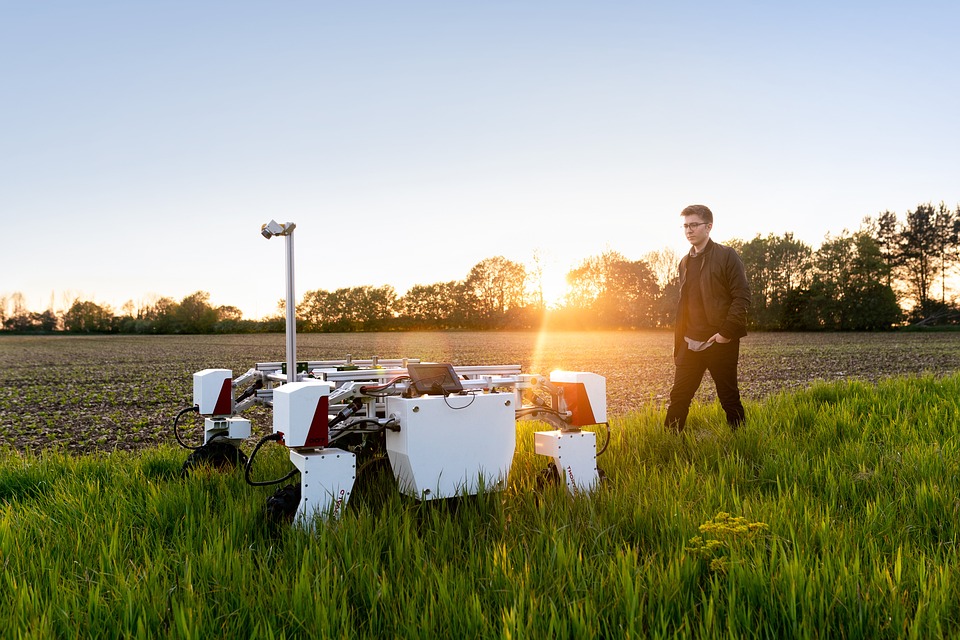As technology continues to advance and markets keep expanding, the application scenarios for intelligent robots are rapidly multiplying. From robotic arms on industrial production lines to educational robots in home settings, Chinese manufacturing is reshaping the global industrial chain through technological innovation and cost advantages. Yet challenges such as escalating international trade barriers and diverging technical standards persist, making it imperative for companies to systematically master relevant export strategies. Below is an in-depth analysis of the key pathways for exporting Chinese intelligent robots:

I. Export Status and Market Landscape
1. Global market share
China's intelligent robots (including industrial robots, service robots, and special-purpose robots) recorded an export value of US$18.7 billion in 2024, accounting for 32% of the global market and maintaining an annual growth rate of over 15% for three consecutive years.
Core Market Distribution:
- Asia (45%): South Korea, Japan, Southeast Asia (Vietnam, Thailand—automation demand surging);
- Europe (30%): Germany (automotive supply chain support), France (medical robot procurement);
- North America (15%): Mexico (nearshoring to replace Chinese capacity), United States (focused on warehousing and logistics robots).
2. Technological competitiveness divergence
- Key strengths: AGV handling robots (55% global market share), educational/household service robots (dominated by DJI and UBTECH);
- Weak spots: high-precision industrial articulated robots (Japan’s FANUC and Germany’s KUKA still hold 70% of the high-end market) and surgical robots (monopolized by U.S.-based Intuitive Surgical).
3. Policy and Supply Chain Dynamics
- Affected by the U.S. Inflation Reduction Act, robots exported to Mexico must meet a 65% North American localization rate to qualify for tariff exemption;
- Starting in 2025, the EU will mandatorily enforce the AI Ethics Compliance Certification (ECPAI), requiring robot data collection to meet GDPR standards.
II. Core Process of Export Agency
(Explained in phases; full cycle approximately 3–6 months)
| Phase | Key Steps | Key Operating Points |
|---|---|---|
| 1. Qualification Review | Screen overseas agents | - 電気機(jī)械機(jī)器の輸入経験のある販売代理店を優(yōu)先する - 対象國の通関能力を確認(rèn)する(例:EUではEORI番號(hào)が必要) |
| 2. Compliance Adaptation | Technical Parameter Adjustment | - 電圧適応(例:米國 120V vs 中國 220V) - ソフトウェア言語とインターフェースのローカライズ(多言語OSがプリインストールされている必要があります) |
| 3. Contract Signing | Risk Clause Design | - 知的財(cái)産権の所有権の明確化(OEM/ODMモデルの違い) - アフターセールスの責(zé)任分擔(dān)について合意する(FOB/CIF條件は修理費(fèi)用に影響します) |
| 4. Logistics and Customs Clearance | 輸送方法の選択 | - 高額商品の場(chǎng)合は、航空便で発送し、保稅倉庫で準(zhǔn)備することをお?jiǎng)幛幛筏蓼梗ǜ郅亲阒工幛丹欷毳辚攻蜉X減するため) - 東南アジア市場(chǎng)では、中國?歐州間の鉄道と陸上輸送を利用してコストを削減できる |
| 5. Go-Live Operations | Localization services | - 海外スペアパーツ倉庫の設(shè)立(代理店との合弁事業(yè)を推奨) - エージェント技術(shù)チームのトレーニング(VRリモート操作?保守システムの提供) |

III. Required Documents Checklist
1. Basic Trade Documents
- Commercial Invoice (indicating HS Code: 847950—Dedicated for Intelligent Robots)
- Packing list (IP protection rating and battery type must be indicated)
- Bill of Lading (B/L) or Air Waybill (AWB)
2. Compliance certification documents (subject to the specific regulations of the destination country)
- CE Marking (mandatory in the EU, covering EMC and LVD directives)
- FCC ID (mandatory for wireless communication modules in the U.S. market)
- KC Certification (Korea, robot safety test report required)
3. Additional Documents for Special Scenarios
- End-User Statement (Required for exports to Iran and Russia to avoid U.S. secondary sanctions)
- AI Ethics Compliance Certificate (for the EU market, a third-party agency must issue an algorithmic transparency report)
四、重要な注意事項(xiàng)
1. Technical Compliance Trap
- Avoid using chips from U.S.-sanctioned companies (e.g., HiSilicon), or you may trigger BIS export controls;
- If the speech recognition module of a service robot involves privacy-related data collection, it must obtain ISO/IEC 27701 privacy certification.
2. Tax Optimization Strategies
- Leveraging the RCEP rules of origin accumulation, assembly in ASEAN countries can enjoy tariff reductions;
- Exports to the U.S. can be routed through Mexico’s bonded processing zones to sidestep the 25% Section 301 surtax (stay alert to recent U.S.–Mexico tariff developments).
3. After-sales Risk Management
- Purchase product liability insurance;
- Include a “Technology Iteration Clause” in the contract, stipulating the fee standards and time limits for software upgrade services.

V. Comparison of Major Certification Systems
| Certification Type | Applicable Markets | Core Requirements | Cycle/Cost |
|---|---|---|---|
| CE (European Union) | Europe, Middle East | - EMC電磁両立性 - 機(jī)械指令 2006/42/EC | 8–12 weeks, ¥80,000–150,000 |
| NRTL (United States) | North America | - UL 3300規(guī)格(サービスロボット) - 耐火材料試験 | 6–10 weeks, $15,000–30,000 |
| GOST-R (Russia) | Russia, Belarus, Kazakhstan | - 気候適応試験(-40℃~50℃) - ロシア語の取扱説明書 | 12 weeks+, local lab required |
| ICC (Saudi Arabia) | Middle East | - SASOエネルギー効率ラベル - イスラム暦の互換性の調(diào)整 | Government-designated agency representation |
結(jié)論
The global competition in intelligent robotics has entered an era of dual-dimensional contest combining “technology + rules.” Only by delving deep into core component R&D, building resilient supply chains, and thoroughly mastering international regulations can Chinese companies break through trade barriers and technological blockades.
Finally, may your export journey be smooth sailing! And if you need any agency services in your export business, please feel free to contact us at any time!


 カスタマーサービスWeChatをフォローしてください
カスタマーサービスWeChatをフォローしてください